Preceded by Alejandro Toledo Succeeded by Ollanta Humala | Name Alan Garcia Role Former President of Peru | |
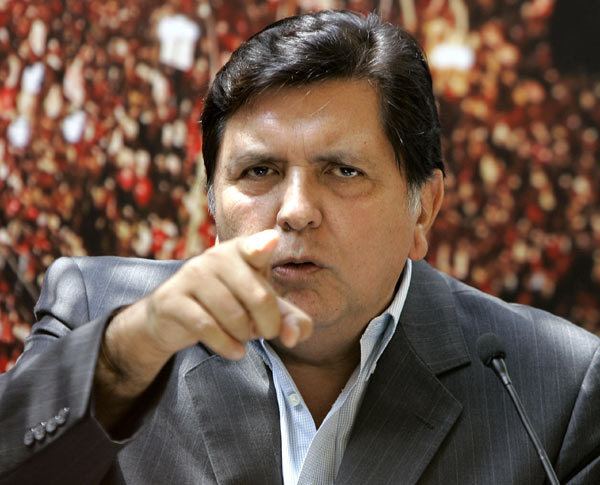 | ||
Prime Minister Jorge del Castillo
Yehude Simon
Javier Velasquez
Jose Antonio Chang
Rosario Fernandez Vice President Luis Giampietri
Lourdes Mendoza Prime Minister Luis Alva Castro
Armando Villanueva
Luis Alberto Sanchez
Guillermo Larco Cox Vice President Luis Alberto Sanchez
Luis Alva Castro Spouse Pilar Nores de Garcia (m. 1978) Books Globalization with Social Justice: Modernization and Politics in the 21st Century Children Carla Garcia Buscaglia, Luciana Victoria Garcia Education National University of San Marcos, University of Paris Parents Carlos Garcia Ronceros, Nytha Perez Rojas Similar People Ollanta Humala, Alberto Fujimori, Alejandro Toledo, Keiko Fujimori, Nadine Heredia Profiles | ||
Colombia alan garcia video broadcast
Alan Gabriel Ludwig García Pérez ([ˈalaŋ ɡaβˈɾjel luðˈwiɣ ɡarˈsi.a ]; born 23 May 1949) is a Peruvian politician who served as President of Peru from 1985 to 1990 and again from 2006 to 2011. He was the leader of the Peruvian Aprista Party and the only party member ever to have served as President.
Contents
- Colombia alan garcia video broadcast
- Colombia alan garcia allegation of election fraud in peru
- Early life
- First Presidency
- Post presidency
- Second Presidency
- Foreign affairs
- Second Post Presidency and fourth presidential campaign
- Public image
- Published works
- References
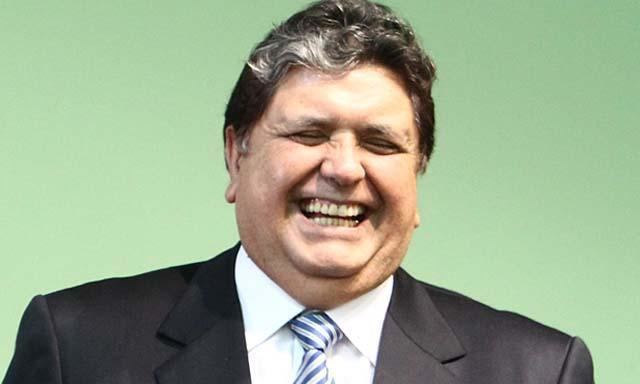
His first term was marked by a severe economic crisis, social unrest and violence. He ran unsuccessfully for the Presidency in 2001, losing in a run-off to Alejandro Toledo. He ran again in 2006 and was elected to a second term, even though his first term in the 1980s was considered by many to have been disastrous. During García's second term, due to the increase in metal prices, Peru averaged seven percent GDP growth a year, held inflation below three percent annually and collated Peru's foreign exchange reserves at US$47 billion; however, his tenure also resulted in increased environmental damage, according to critics, and increased social conflict, according to the national human rights ombudsman's office.
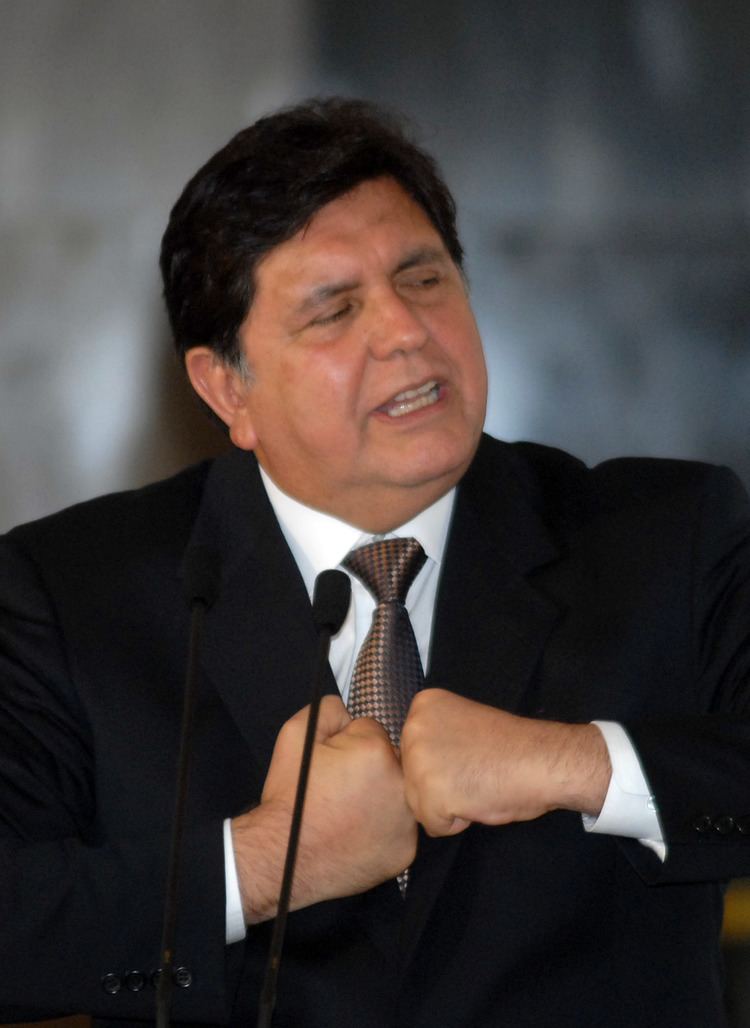
Colombia alan garcia allegation of election fraud in peru
Early life
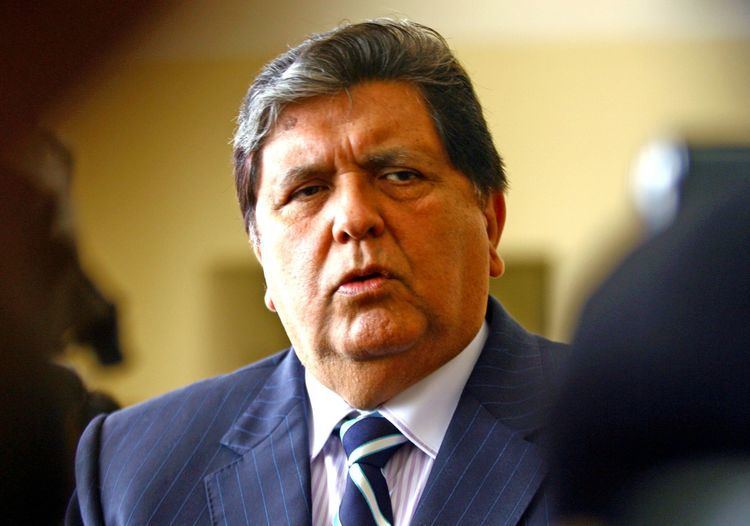
Born in the Maison de Santé Clinic of the Barranco District into a middle-class family, García met his father for the first time when he was 5 years old, due to his father's imprisonment for being a member of the Peruvian Aprista Party. His mother founded the party's base in the Camaná Province of the Arequipa Region. Since very young, he accompanied his father in party meetings and began acquainted with future leaders of the American Popular Revolutionary Alliance (APRA), such as Luis Alva Castro and Mercedes Cabanillas. At the age of 14, he was already an immensely talented orator when he first gave a speech in honor of patriarch Víctor Raúl Haya de la Torre, who he admired and followed until his death.

García studied law, first at the Pontifical Catholic University of Peru, and earned his law degree at the National University of San Marcos in 1971. A year later, he left Peru for Spain, where he studied for a PhD. in law, for years Alan Garcia claimed to have earned a PhD, however in 2014, documents from the university proved he never finished his PhD. In 1974, he travelled to France with other members of the APRA to study at the prestigious University of Paris I. After earning a degree in sociology, he was called by Víctor Raúl Haya de la Torre to come back to Peru in order to run for the Constituent Assembly election in 1978. García was elected for public office as Member of the Assembly, impressing his colleagues with his oratory and skillful rhetoric. As Secretary of Organization of the APRA, he was assigned to conduct the party's public affairs during the wake of Haya de la Torre's death.
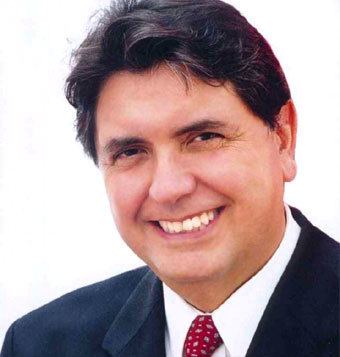
Already recognized as a young leader with a bright future for the country, he was elected Member of Congress in 1980. Two years later, he was elected General Secretary of the Peruvian Aprista Party, the highest position ever achieved by a member of the party. He was elected as presidential nominee for the 1985 general election.
First Presidency
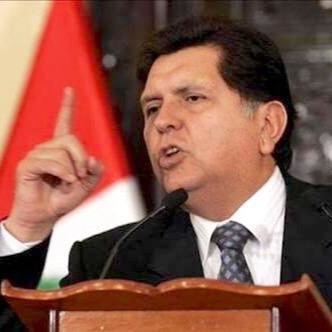
Alan García won the presidential election on April 14, 1985 with 45% of the votes. Since he did not receive the 50% of the votes required to win the presidency, García had to enter a run-off against Alfonso Barrantes (the leftist former mayor of Lima) of the United Left party. Barrantes, however, retired and decided not to enter the run-off, saying he did not want to prolong the political uncertainty of the country. García was thus declared President on 1 June and officially took power on 28 July 1985. For the first time in its sixty-year history, the APRA party came to power in Peru. Aged 36, García was dubbed "Latin America's Kennedy", becoming the region's youngest president at the time, and the second youngest president in Peruvian history (the youngest was Juan Crisostomo Torrico in 1842, aged 34).
Despite his initial popularity among Peruvian voters, García's term in office was marked by bouts of hyperinflation, which reached 7,649% in 1990 and had a cumulative total of 2,200,200% over the five years, thereby profoundly destabilising the Peruvian economy. Owing to such chronic inflation, the Peruvian currency, the sol, was replaced by the Inti in mid-1985, which itself was replaced by the nuevo sol ("new sun") in July 1991, at which time the new sol had a cumulative value of one billion (1,000,000,000) old soles. During García's administration, the per capita annual income of Peruvians fell to $720 (below the level of 1960) and Peru's GDP dropped 20%. By the end of his term, national reserves were negative $900 million.
According to studies of the National Institute of Statistics and Informatics and the United Nations Development Programme, around the start of his presidency, 41.6% of Peruvians lived in poverty. During his presidency, this percentage increased by 13% (to 55%) in 1991. García also made an attempt to nationalise the banking and insurance industries. The International Monetary Fund and the financial community retracted after the presidency unilaterally declared a limit on debt repayment equal to 10% of the Gross National Product, thereby isolating Peru from the international financial markets.
The economic turbulence exacerbated social tensions in Peru and contributed in part to the rise of the violent rebel movement known as the Shining Path, which launched the internal conflict in Peru and began attacking electrical towers, causing a number of blackouts in Lima. The García administration unsuccessfully sought a military solution to the growing terrorism, allegedly committing human rights violations, which are still under investigation. These include the Accomarca massacre, where 47 campesinos were gunned down by Peruvian armed forces in August 1985, the Cayara massacre (May 1988) in which some thirty people were killed and dozens disappeared, and the summary execution of more than 200 inmates during prison riots in Lurigancho, San Juan Bautista (El Frontón) and Santa Bárbara in 1986. According to an official inquiry, an estimated 1,600 forced disappearances took place during García's presidency. His own personal involvement in these events is not clear. García was allegedly tied to the paramilitary Rodrigo Franco Command, which is accused of carrying out political murders in Peru during García's presidency. A U.S. declassified report, written in late 1987, said that García's party, APRA, and top government officials were running a paramilitary group, responsible for the attempted bombing of the El Diario newspaper, then linked to Shining Path, had sent people to train in North Korea and may have been involved in executions. According to investigative journalist Lucy Komisar, the report made it clear that it believed García had given the orders.
His presidency left the country with hyperinflation, isolated from the international financial community, with negative reserves of US$900 million, continuous subversive activities by the Shining Path, a great increase in poverty levels and a multimillion-dollar investment in an electric train in Lima that was not finished during his first government, and is still under construction as of 2011. His critics claim many poor decisions he made created an environment that led to the rise of an authoritarian leader like Alberto Fujimori. García was accused of multiple charges of corruption during Fujimori's government, during which he remained overseas. Investigations were abandoned and archived without verdict and the statute of limitations has expired. His economic policies were used by economists Rudi Dornbusch and Sebastian Edwards to coin the term macroeconomic populism.
Post-presidency
In 1992, García went into exile in Colombia and later in France after Fujimori's auto-coup during which the military raided his house. The new government re-opened charges against him for corruption. He denied the charges, and in 2001 Peru's Supreme Court ruled that the statute of limitations had run out following a recommendation by the Inter-American Court of Human Rights.
His long-time ally Jorge Del Castillo represented him as his lawyer and performed very heavy lobbying to allow García to legally return to Peru. After Castillo was elected to Congress, he had much more leverage for García's defence. The main accuser of the former president, Congressman Fernando Olivera, left Peru after Fujimori's fall.Fernando Olivera still follows his accusations against García and remains an avid critic.
After living eight years and ten months in neighbouring Colombia and in France, he returned to Peru in 2001, following the fall of Fujimori's government. As it had been rumored for many years, García ran for president in the new elections called by transitory president Valentín Paniagua, with Jorge Del Castillo as his campaign manager. García competed against some of his harshest critics and worst political enemies, including Lourdes Flores Nano and Fernando Olivera. His campaign election theme was that he was the most experienced candidate and thus the most prepared, as he had made mistakes before as President, and had learned from them. He attributed the problems of the Peruvian economy in his first presidency to the economic problems of Argentina and Brazil at the time. He distanced himself from accusations that he had been protected by Fujimori during his exile, and he would switch the topic when he was asked about his endorsement of Fujimori in the 1990 election.
He finished a distant second in the first round, far behind Alejandro Toledo, but just slightly above Flores Nano (by 1%), enough to take him to a run-off, as Toledo had failed to obtain the 50% majority. During the campaign for the run-off Toledo's popularity decreased, while García's popularity increased with his characteristic rhetoric and classical oratory delivery, which had helped him to get elected in 1985. García managed to obtain 48% of the vote in the run-off, losing by a close margin to Toledo. This was despite the movement "Voto Nulo" ("blank" or void vote), led by Jaime Bayly, a popular writer and TV presenter, and Álvaro Vargas Llosa, son of the famous novelist, in which celebrities asked Peruvian voters to vote for neither candidate and instead intentionally damage their vote cards or leave them blank. After the 2001 election, García, as leader of the APRA party, being Leader of the Opposition (Peru).
García officially started his campaign for the April 2006 presidential election in Lima on 18 February 2005. Ollanta Humala won the initial election with 30.62% of valid votes, followed by García, who got 24.32% (against Lourdes Flores' 23.81%). As no candidate won a majority, a run-off election was held on 4 June 2006 between Humala and García. Preliminary official results gave García an advantage over his run-off opponent, who conceded defeat.
On 28 April 2006, prior to the run-off, García had become involved in a dispute with Venezuelan President Hugo Chávez. As Chávez, for the second time in the Peruvian Presidential elections, declared his support for Ollanta Humala, García's opponent, and referred to García as a "robber", a "bandit", and "the Carlos Andrés Pérez of Peru". In response, García stated that Chávez was "not acting as a statesman" and challenged Chávez to a debate to be hosted by CNN. García called on the Organization of American States to intervene in the matter.
On 31 May 2006, a few days before the run-off election García's economic adviser Enrique Cornejo told the media that if García won in the second round, his government would renew a $422 million aid package with the International Monetary Fund. Anoop Singh, the IMF's Western Hemisphere Director, responded positively by saying he was "impressed by the vision of the president-elected for Peru, especially his commitment to applying prudent economic policy."
Second Presidency
On 28 July 2006, García was sworn in as the new president of Peru, after winning approximately 53% of the nationwide vote in the elections held on June fourth. He won in the capital city, Lima and the northern coast, a geographical base of the APRA party, but lost on the southern region (mostly impoverished but including major cities as Cuzco and Arequipa) and the rain forest areas, considered Humala's strongholds. A third of the voters said that voting for him was "voting for the lesser of two evils": although many Peruvians had a very negative impression of García after his first term, they were frightened by rumours that Humala would create a government based on Fidel Castro's Cuba and would turn Hugo Chávez, President of Venezuela, into the virtual ruler of Peru, due to Chavez's patronage of Humala's party. These fears were accompanied by declarations of militarization, the re-introduction of the death penalty and criminalization and disrespect for LGBT communities. Humala denied these rumours, but his conflicting statements about his government's vision and Chávez's strong campaigning for him created enough suspicions among voters to cost him the ballotage. With 36 seats, APRA was the second largest bloc in the 120-seat unicameral Congress which was sworn in a couple of days before the President. With 45 seats, Humala's Union for Peru Party was the largest bloc, although it divided itself up into three factions.
On June 28, one month before García was sworn in, his party gave 25 of the 79 votes (almost one third of the votes) that ratified the agreement in the Peruvian Congress, one month prior to the new legislature that included the Union for Peru congressmen, who opposed to the agreement with the USA. The US Congress ratified the agreement by December 4, 2007 and it was put into effect February 1, 2009.
In his first speech as President, García said he would appoint a Finance Minister who was neither "an orthodox market liberal" nor a person "excessively in favour of state intervention in the economy". The position of Prime Minister was given to Jorge Del Castillo. According to the BBC, in private interviews García had stated his interest in a possible future trade agreement with Brazil and considered himself "an admirer" of Brazilian President Lula da Silva.
In press conferences with the foreign press, García acknowledged that the support Humala received in the election "could not be ignored". García, in a recognition of future domestic politics with a UPP controlled Congress, was quoted as saying "Mr. Humala is an important political figure, and a President should consult with different political factions". However, Humala said he wouldn't salute the winner personally, adding that "he and his party will constitute the principal opposition bloc, not to fight Mr. García, but to defend the interests of the State and watch the government".
President Chávez of Venezuela responded to García's comments on his show Aló Presidente by stating that it was García who owed him an apology saying "the only way relations between the two countries can be restored is if Peru's elected President [García] gives an explanation and offers an apology to the Venezuelan people. He started throwing stones". Chávez questioned the legitimacy of the election, citing 1.2 million invalid ballots and a margin of victory of 600,000 votes, although offering no evidence for his comments. García, attending an invitation to meet Brazilian president Lula da Silva, responded to Chávez: "Accept your defeat in silence. Don't ask me to apologize for something arising from interference and remarks that are unacceptable under international law." Differences with Chávez were left behind after the two ended their controversy at the II South American Community of Nations Summit.
On the 20th of July, 2006 García named Luis Carranza as Finance Minister, a former executive at Spain-based Banco Bilbao Vizcaya Argentaria and Central Bank director and deputy finance chief from August 2004 to August 2005 in Alejandro Toledo's government. The appointment was welcomed by some detractors of García's fiscal policies during his first administration. But Mario Huamán Rivera, the President of Peru's largest trade union the Confederación General de Trabajadores del Perú (General Workers Confederation of Peru), attacked the appointment stating that "it looks as though Alan García is not going to fulfill his promise to change economic policy".
On the day before his inauguration, García formally named his cabinet including former Secretary-General of the APRA party and re-elected Congressman Jorge del Castillo as Prime Minister, Luis Carranza as Minister of Finance and Economy, and José Antonio García Belaúnde as Foreign Affairs Minister. García was inaugurated as President of Peru on 28 July 2006.
During his campaign, García declared that he supported the death penalty for rapists of minors; he has repeated this stance while in office pushing a law on the matter, which would modify the Criminal Code. Although the issue seemed to be stalled, García widened the range of his proposal for the death penalty, by including terrorists in the list of those who could receive it.
García faced his first major political defeat of his second term in office on January 11, 2007 when his proposal to introduce the death penalty as a punishment for captured Shining Path rebels was rejected by Congress in a vote of 49 to 26. García had promised to introduce the death penalty for Shining Path rebels during the 2006 Presidential election. Following the defeat of the proposal, García suggested a national referendum on the issue but it was blocked by Congress. Legislators who voted against the bill stated that it would be a breach of the American Convention on Human Rights to which Peru is a signatory. Approximately 3000 supporters of the proposal marched in Lima holding up photos of victims of attacks by the Shining Path.
On the 5th of June 2009, García ordered Peruvian Police and military forces to stop Amazonian Indigenous protesters from blocking roads in the Bagua region. They had been demonstrating against the signing by Alan García of special decrees that allowed foreign corporations to enter Indigenous lands for oil drilling, mining and logging. As a result of the protests and armed military incursion, more than 100 native civilians and 14 policemen were killed. The government claimed, in a redacted television commercial, that several policemen were killed after being taken prisoner, while protesters claimed the bodies of the murdered amazon Natives have been dumped into the river.
With the passage of time, studies of human rights violations in Peru have discovered a close relationship between Garcia and the forces within Peru who promote impunity for human rights violators. Garcia was involved in colonizing the bench by placing inside the judiciary judges who would be sympathetic to perpetrators of human rights violations. Additionally, Garcia was supportive of efforts to punish judges who handed down indictments of perpetrators. Garcia himself was in the presidency during many gross violations of human rights and he has been quite hostile to human rights organizations and to judicial actors who seek justice for victims of human rights violations. During his presidency Garcia sought to tilt the legal playing field in favor of the military and against victims. He also tried to make life difficult for NGOs seeking to help victims. For example, he offered extensive resources to defendants and military officers while creating new laws that would make it difficult for human rights NGOs to do their jobs, receive necessary resources, and pursue the advance of judicial action that attempted to bring human rights <violators to justice.
Foreign affairs
After being elected, in the months prior to his inauguration, García sought to heal the relationship with Chile, which was stressed due to the differences between the governments of Alejandro Toledo and Ricardo Lagos and severely impaired by the former Peruvian President Alberto Fujimori's extradition affair. García's intentions were well received by Michelle Bachelet, President of Chile, as she and García met and struck some pre-agreements. These conversations eventually led to the final draft of a landmark economic agreement with Chile a month after García was sworn in.
On 9 November 2006, three months after being elected, García signed 12 commercial agreements with President Luiz Inácio Lula da Silva of Brazil, strengthening the relationship between the two countries. As part of the IIRSA program and continuing integration efforts -including the August 2006 negotiations between Petrobras and Petroperú-, these new agreements seek to further bilateral cooperation. García offered Peruvian hydropower to meet Brazil's growing energy needs, although further details were not disclosed.
Second Post-Presidency and fourth presidential campaign
García left office on July 28, 2011, with a 42% of popular approval. He became one of Ollanta Humala's harshest critics, leading the opposition, conjointly with Keiko Fujimori. Aside from politics, García has served as Director of the Institute of Government and Public Administration of the Universidad de San Martín de Porres in Lima, appointed by his former Minister of Education, José Antonio Chang, the university's president.
After years of media speculation that if García would seek a third term as President, he officially launched his campaign on October 30, 2015. In December 2015, after a mutual agreement with his former arch-rival Lourdes Flores, he announced that he would run allied with the Christian People's Party, naming the coalition "Popular Alliance (Peru)".
The election's exit polls gave García a 6% of the popular vote, without a chance to make it to the runoff, that eventually took place between Pedro Pablo Kuczynski and Keiko Fujimori. He tendered his resignation to the office of President of the Peruvian Aprista Party on April 11, 2016, after 12 years in the position. He has called for the renovation of the party, reaffirming Víctor Raúl Haya de la Torre's legacy and ideology to the youth.
In 2016 and 2017, five of his ex-ministers are accused of corruption by the Peruvian justice system : Yehude Simon (Chairman of the Council of Ministers), Rosario Fernández (Minister of the Justice), Mercedes Cabanillas (Minister of the Interior), Antero Flores-Aráoz (Minister of the Defence) and Luis Nava (Minister of the Production).
Public image
García returned in 2006 to the presidency of Peru on 28 July, sixteen years after his first term in office ended.
Peru was ranked as Latin America's third-best country for business on the 2008 Latin Business Index from the Latin Business Chronicle.
Published works
García is the author of several books on the Peruvian reality and Latin America. Most of them may be found in the National Library of Peru. His published works include the following:
